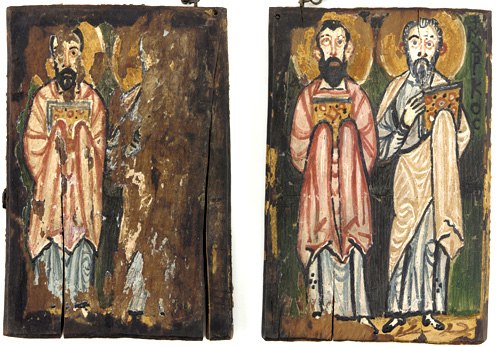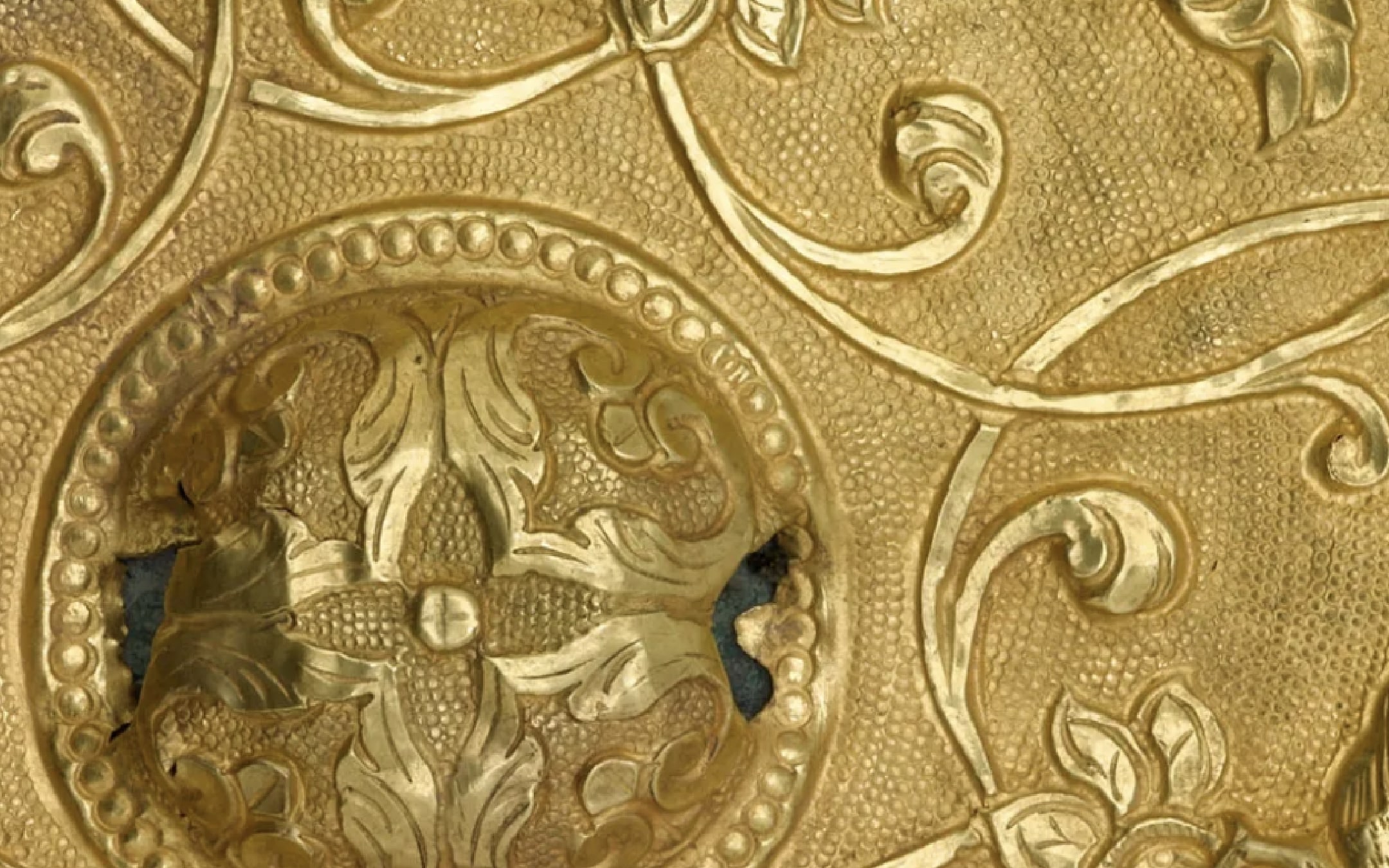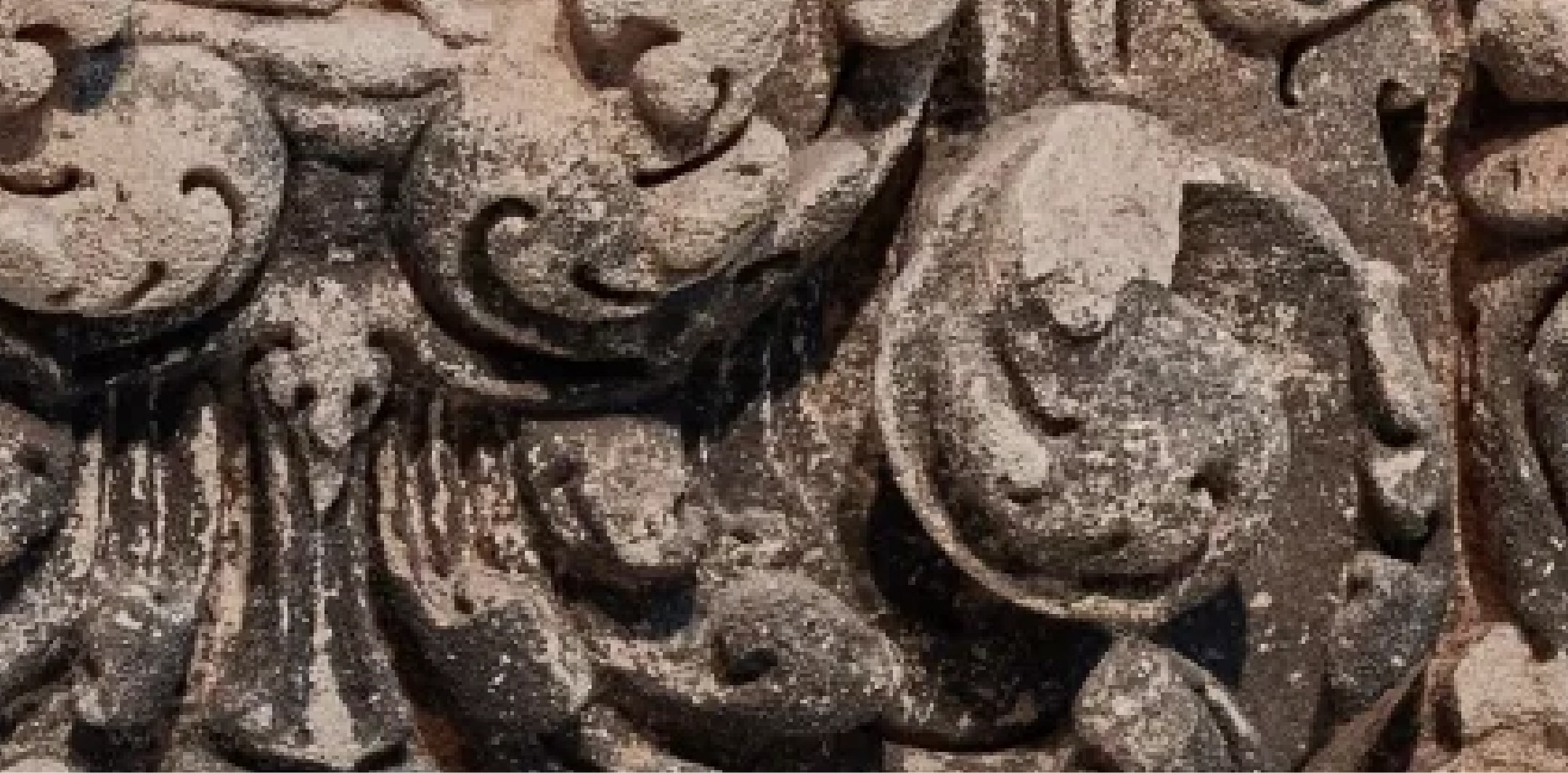
Washington, D.C., Freer Gallery of Art, F1906.297 (Matthew and John), F1906.298 (Mark and Luke) (MS. III; Codex Washingtonensis)
Covers from the Freer Gospels; Greek
Encaustic (wax) painting on wooden boards; 213 x 143 x 16mm (each board)
Coptic Egypt; seventh century
The Freer gospelbook, one of the earliest witnesses to the Greek Bible, was made in Egypt during the late fourth to early fifth century. It was purchased by Charles Freer in Cairo in 1906. During the seventh century the book’s wooden boards were adorned with images of the four evangelists whose gospels lie within. They are depicted bearded in Byzantine fashion, each head framed by a nimbus, and hold individual copies of their gospels bound in jeweled treasure bindings. Their hands are draped in the attitude of veneration adopted by the deacon when carrying the gospels in procession and reading from them during the liturgy.
The vibrancy of the colors has been retained due to the use of the encaustic painting technique that was particularly favored in Coptic Egypt. Encaustic paint consists of pigments mixed with beeswax that is worked when molten, applied to a surface, and reheated, giving an enamel-like finish. The term comes from the Greek term “to burn in,” referring to the process of fusing the paint to its support. Encaustic painting was practised by the Greeks from the fifth century B.C.E. and Pliny the Younger, writing in the first century C.E., tells of Roman encaustic painting on wooden panels, marble, and ivory. Some of the finest examples of the art are the funerary portraits that adorned mummified burials in the Fayyum during the first and second centuries and the technique was perpetuated in Egypt during the early Middle Ages. It was a difficult process but one that permitted a building-up of paint in relief, with a jewel-like luminescence and a far better rate of preservation than tempera, as it is moisture-proof and does not fade, discolor, or require varnishing.
The binding boards are probably contemporary with the volume and were originally simply of wood, perhaps contained in an envelope binding, in accordance with early practice. Holes in the edges of the front cover show that, like the Glazier Codex (New York, Morgan Library and Museum, MS. G.67), the Freer Gospels were originally held closed by long leather bands, tied to prevent the parchment from cockling. These were removed to protect the paintings, which were added later to enhance the appearance and importance of the book. Traces of paint on the fore-edges suggest, as John Lowden notes, that the evangelist paintings were added in situ to the bound book.
The metalwork fittings at the head of the binding served to prevent the volume from being opened very far, thereby protecting its structure and contents but also effectively preventing the text from being read. Lowden has suggested that this later embellishment and chaining of the volume amounted to its enshrinement as a relic (perhaps protected by a fabric wrapping when not displayed), the images of the gospelers effectively serving as a substitute for their inaccessible gospels.
Author
Michelle P. Brown
Professor of Medieval Manuscript Studies, University of London; Visiting Professor, Leeds University; Regional Programmes (and formerly Curator of Illuminated Manuscripts), British Library; Lay Canon and chapter member of Saint Paul’s Cathedral, London
Bibliography
Sanders, 1908; Sanders, 1913; Morey, 1914; Buchthal and Kurz, 1942; Leroy, 1974, pp. 87-89, pl. 26; Metzger, 1992, pp. 56-57; Lowden, forthcoming; Mayer, 1962.


